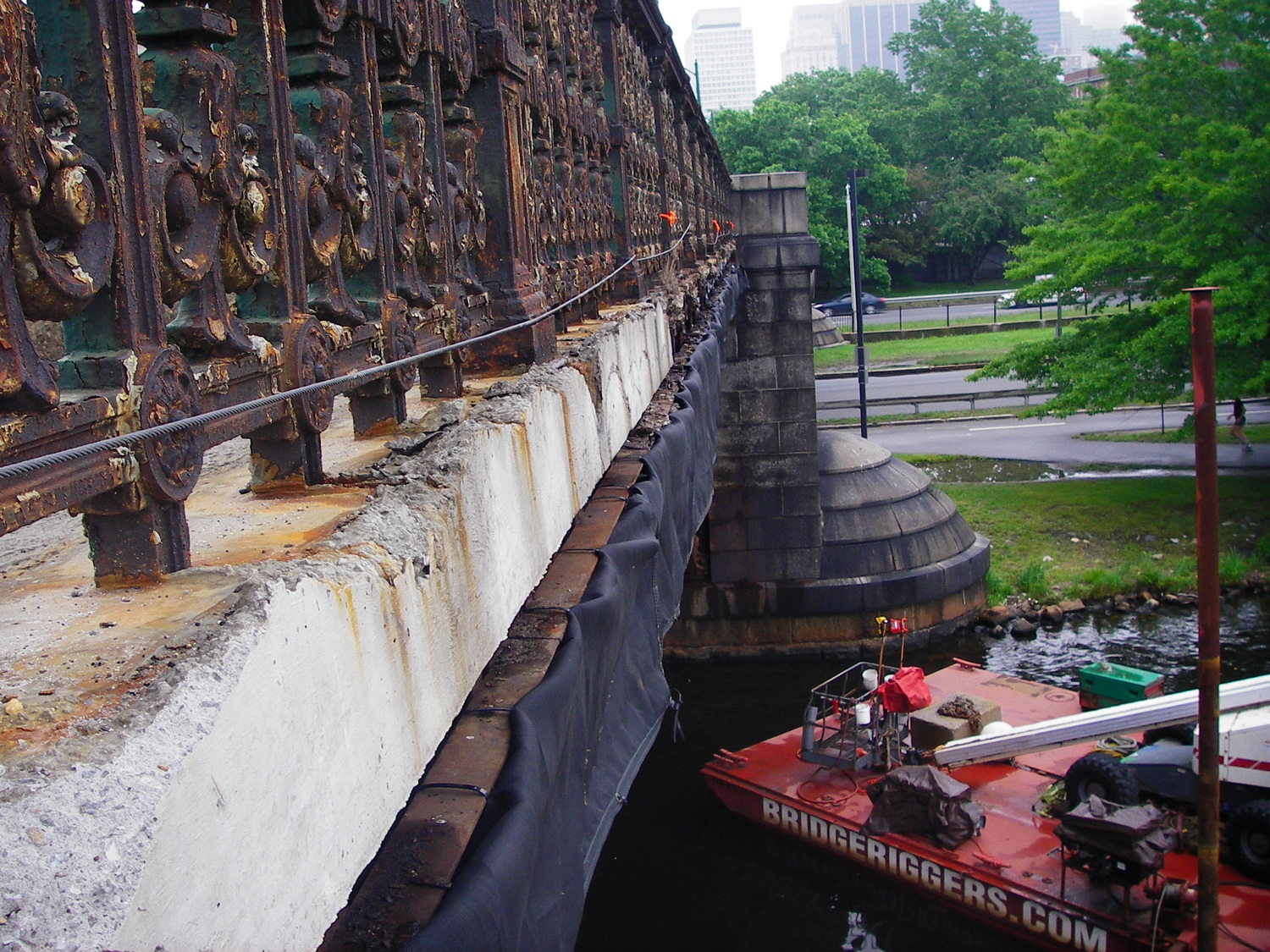Boston-Cambridge, MA
Longfellow Bridge
Scope/Solutions
With its iconic towers flanking the center span, the Longfellow Bridge carries vehicular traffic and MBTA rail lines across the Charles River. The Massachusetts Department of Transportation (MassDOT) was concerned about the condition of the 1907 bridge. Working with a team of consultants, SGH investigated the stone masonry and concrete substructures and the steel-supported concrete sidewalks.
SGH inspected the towers and substructures to assess their condition, performed nondestructive testing of concrete elements, and conducted laboratory testing of concrete and masonry samples removed from the bridge. We evaluated scour at the bridge’s piers and abutment and analyzed the seismic performance of the stone masonry and concrete substructures, including the eight iconic stone masonry towers.
As part of the $3 billion Accelerated Bridge Program, MassDOT initiated a complete floor‑system replacement, superstructure rehabilitation, reconstruction of the four large towers, restoration of the four small towers, and seismic retrofit of the substructures. SGH designed repairs for the concrete and granite masonry elements to extend the useful life of the structure and new reinforced concrete shear walls to improve the bridge’s seismic performance. We carefully developed a rehabilitation plan, including seismic upgrades hidden inside the granite towers, piers, and abutments to avoid negatively affecting the appearance of the historic structure. For the tower reconstruction, SGH observed removals, advised on granite repairs, and witnessed reinstallation.
Prior to this rehabilitation project, SGH also helped the Department of Conservation & Recreation (former bridge owner) reopen severely deteriorated sidewalks for viewers of the Fourth of July Esplanade fireworks. We performed nondestructive testing, load testing, and finite element analyses, and designed temporary structural supports for cantilevered steel sidewalk brackets supporting the concrete deck.
Project Summary
Key team members






